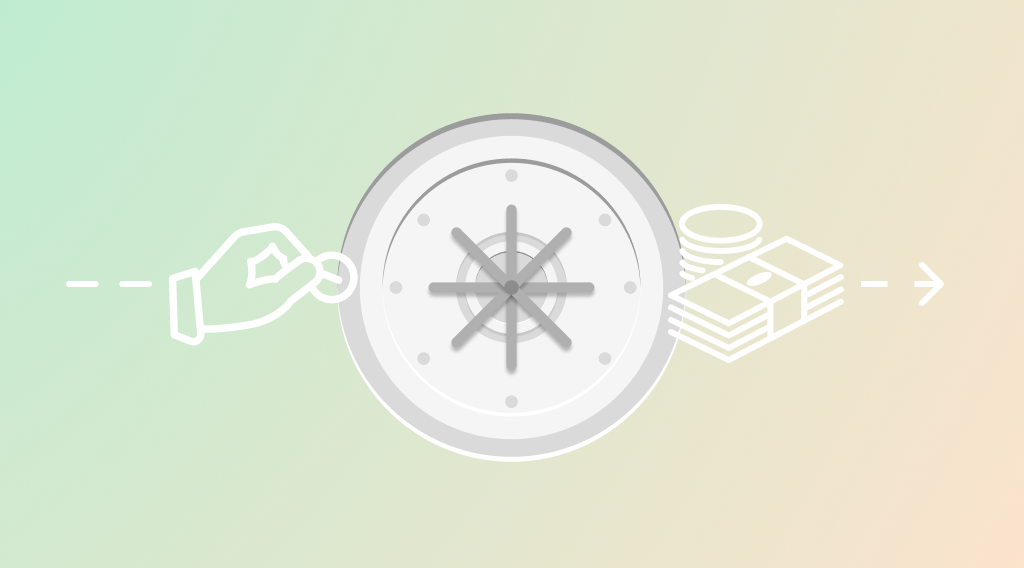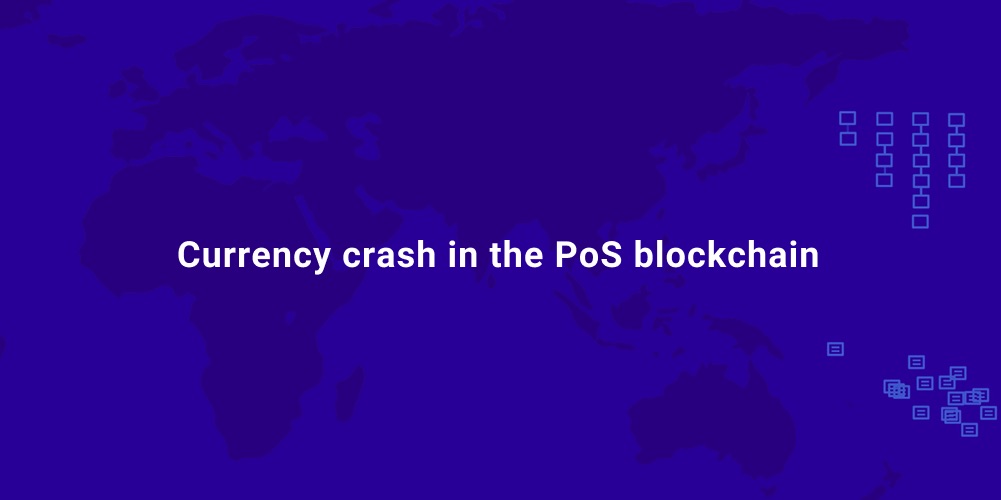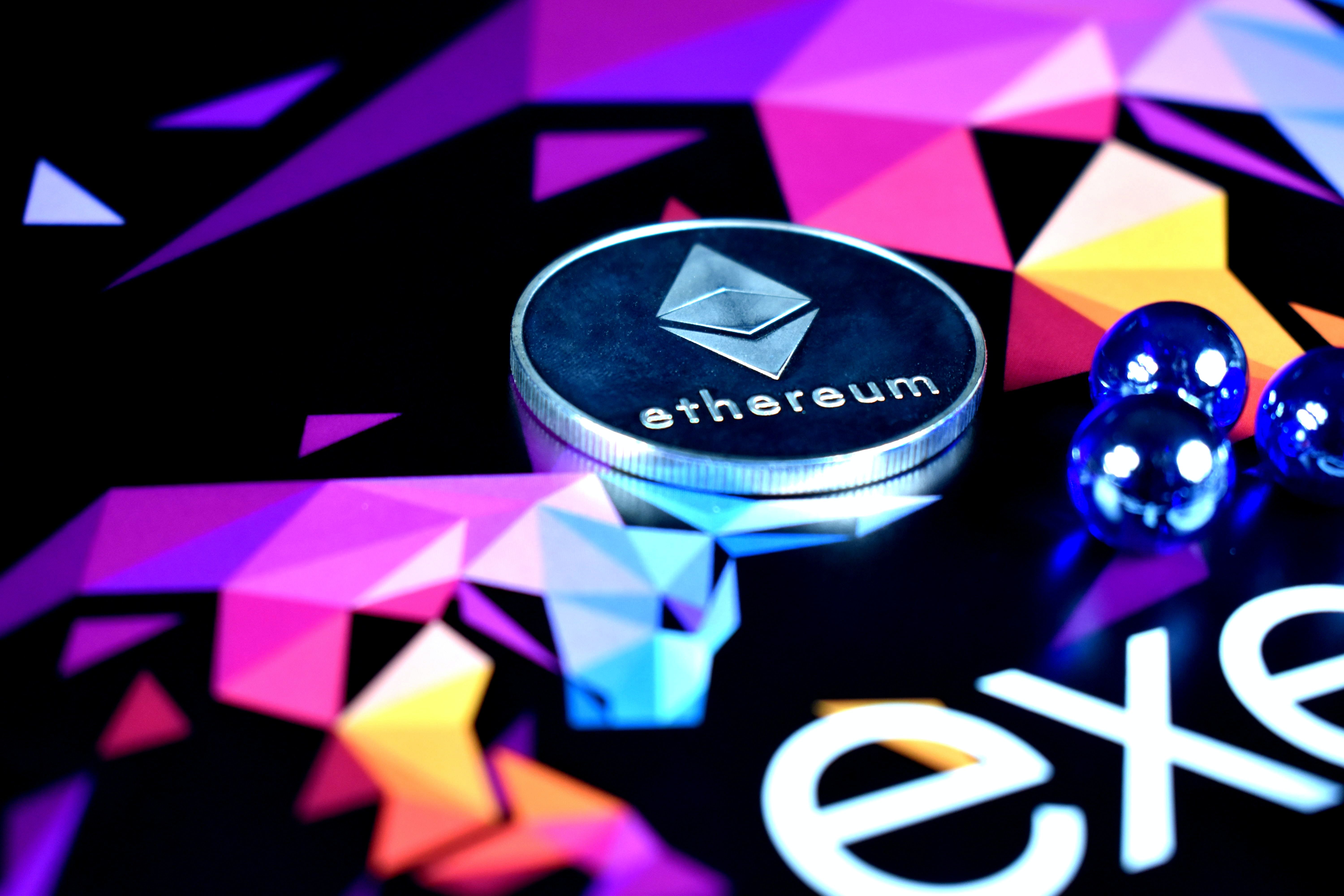
 Web3 is not about blockchain or decentralization. It is about the democratization of the web
Web3 is not about blockchain or decentralization. It is about the democratization of the web
 Raunaq Vaisoha is a second-time crypto entrepreneur and has been in the space since 2013. NFTs are evolving from static to dynamic objects.
Raunaq Vaisoha is a second-time crypto entrepreneur and has been in the space since 2013. NFTs are evolving from static to dynamic objects.
 The reason Cardano is the most the decentralized crypto and most developed project on Github is because it it best satisfies the real definition of money.
The reason Cardano is the most the decentralized crypto and most developed project on Github is because it it best satisfies the real definition of money.
 The purpose of this short article is not to disapprove concepts and achievements of IOHK foundation. It is rather an opposite — an attempt to openly discuss issues related to the newest version ‘Shelley’ that will be tested in the upcoming months and may be implemented next year.
The purpose of this short article is not to disapprove concepts and achievements of IOHK foundation. It is rather an opposite — an attempt to openly discuss issues related to the newest version ‘Shelley’ that will be tested in the upcoming months and may be implemented next year.
 Through a more clever mix of game theory and cryptography, Silvio Micali and his team might have created tomorrow’s infrastructure. Fast, secure and scalable.
Through a more clever mix of game theory and cryptography, Silvio Micali and his team might have created tomorrow’s infrastructure. Fast, secure and scalable.
 While traditional blockchains focus their rewarding on transaction processing, Proof-of-Data-chains are focused on data stored in decentralized filesystem.
While traditional blockchains focus their rewarding on transaction processing, Proof-of-Data-chains are focused on data stored in decentralized filesystem.
 In this article, we briefly review some advance topics in Ethereum blockchain development. To follow and understand this article, basic knowledge of blockchain technology and Ethereum development is required. Here is an excellent article for learning about blockchain history and evolution and how blockchain technology works.
In this article, we briefly review some advance topics in Ethereum blockchain development. To follow and understand this article, basic knowledge of blockchain technology and Ethereum development is required. Here is an excellent article for learning about blockchain history and evolution and how blockchain technology works.
 There is no doubt that proof of stake (PoS) has become a popular consensus algorithm in the cryptocurrency world.
There is no doubt that proof of stake (PoS) has become a popular consensus algorithm in the cryptocurrency world.
 The Merge upgrade changed a lot for Ethereum, including the lowering its issuance level, making projects deflationary as an important trend in the crypto space.
The Merge upgrade changed a lot for Ethereum, including the lowering its issuance level, making projects deflationary as an important trend in the crypto space.
 Proof of Work is an important aspect of the cryptocurrency solution. Here are my favorite Proof of Work cryptocurrencies.
Proof of Work is an important aspect of the cryptocurrency solution. Here are my favorite Proof of Work cryptocurrencies.
 What exactly does becoming a deflationary cryptocurrency mean for Ethereum? And why is this important?
What exactly does becoming a deflationary cryptocurrency mean for Ethereum? And why is this important?
 A breakdown of the Ethereum Merge. What is ETH 2.0 and what it means for the Web3 industry
A breakdown of the Ethereum Merge. What is ETH 2.0 and what it means for the Web3 industry
 Justin Sun highlights why proof-of-work is an essential part of Ethereum, and lends his expert insights regarding the matter.
Justin Sun highlights why proof-of-work is an essential part of Ethereum, and lends his expert insights regarding the matter.
 Morphware is a decentralized approach to deep learning. The main problem that Morphware aims to address is the computational complexity required to train.
Morphware is a decentralized approach to deep learning. The main problem that Morphware aims to address is the computational complexity required to train.
 Prices of ETH have gone bearish following the Merge's successful execution, which upgraded the Ethereum network from PoW to PoS in September.
Prices of ETH have gone bearish following the Merge's successful execution, which upgraded the Ethereum network from PoW to PoS in September.
 Introduction
Introduction
 Staking is like the treasury of the crypto world. It offers low-risk yield and is the best strategy in the bear market. Here are must know rules before staking.
Staking is like the treasury of the crypto world. It offers low-risk yield and is the best strategy in the bear market. Here are must know rules before staking.
 Finding a human-centric solution to the problems that most blockchains face when it comes to fair voting in its currently plutocratic and unequal form.
Finding a human-centric solution to the problems that most blockchains face when it comes to fair voting in its currently plutocratic and unequal form.
 To call Proof of Stake a savior is a stretch. To call Proof a Stake a stopgap…perhaps. To call Proof of Stake something new is simply not true.
To call Proof of Stake a savior is a stretch. To call Proof a Stake a stopgap…perhaps. To call Proof of Stake something new is simply not true.
 Two common PoS implementations are BFT and Ouroboros. Blockchains turn to PoS due to factions such as TPS, decentralization, tokenomics, and fast finality.
Two common PoS implementations are BFT and Ouroboros. Blockchains turn to PoS due to factions such as TPS, decentralization, tokenomics, and fast finality.
 Why are NFTs bad for the environment? These are all examples built on blockchains that do not use Proof-of-Work or any other type of energy-intensive methods.
Why are NFTs bad for the environment? These are all examples built on blockchains that do not use Proof-of-Work or any other type of energy-intensive methods.
 For advocates of the widescale adoption of cryptocurrency, there is one major challenge that stands in the way of their dream coming true. Namely, the fact that mining cryptocurrencies require exorbitant — and seemingly wasteful — amounts of energy.
For advocates of the widescale adoption of cryptocurrency, there is one major challenge that stands in the way of their dream coming true. Namely, the fact that mining cryptocurrencies require exorbitant — and seemingly wasteful — amounts of energy.
 A Founder interview with Cheng Wang, founder of Alephium and creator of Proof-of-Less-Work, an alternative third road in the world of blockchain staking
A Founder interview with Cheng Wang, founder of Alephium and creator of Proof-of-Less-Work, an alternative third road in the world of blockchain staking
 Proof of Stake (PoS) consensus is opening the doors to crypto investors looking to increase their profits. With PoS, they no longer need to have the best hardware and expend massive amounts of energy to compete against other miners to be the fastest to validate a block. With PoS, investors can simply stake some of their crypto for the chance to be chosen to validate a block and gain returns for doing so.
Proof of Stake (PoS) consensus is opening the doors to crypto investors looking to increase their profits. With PoS, they no longer need to have the best hardware and expend massive amounts of energy to compete against other miners to be the fastest to validate a block. With PoS, investors can simply stake some of their crypto for the chance to be chosen to validate a block and gain returns for doing so.
 Ethereum's Merge switched the blockchain from Proof of Work to Proof of Stake. While it addressed some of the old problems, it created a new set to deal with.
Ethereum's Merge switched the blockchain from Proof of Work to Proof of Stake. While it addressed some of the old problems, it created a new set to deal with.
 Staking is a way to make money from your idle Proof-of-Stake (PoS) cryptocurrency without trading while getting genuinely involved with its network.
Staking is a way to make money from your idle Proof-of-Stake (PoS) cryptocurrency without trading while getting genuinely involved with its network.
 Everyone and his grandma know what cryptocurrency mining is. Well, they may not indeed know what it actually is, in technical terms, but they have definitely heard the phrase as it is hard to miss the news about mining sucking in energy like a black hole gobbles up matter. On the other hand, staking, its little bro, has mostly been hiding in the shadows until recently.
Everyone and his grandma know what cryptocurrency mining is. Well, they may not indeed know what it actually is, in technical terms, but they have definitely heard the phrase as it is hard to miss the news about mining sucking in energy like a black hole gobbles up matter. On the other hand, staking, its little bro, has mostly been hiding in the shadows until recently.
Today, with DeFi making breaking news across the cryptoverse, staking has become a new buzzword in the blockchain space and beyond, along with the fresh entries to the crypto asset investor’s vocabulary such as “yield farming”, “rug pull”, “total value locked”, and similar arcane stuff. If you are not scared off yet, then read on. Though we can’t promise you won’t be.
 Many tech experts argue about Blockchain's carbon footprints consensus mechanisms. Learn the pros and cons of proof-of-stake vs. proof-of-work.
Many tech experts argue about Blockchain's carbon footprints consensus mechanisms. Learn the pros and cons of proof-of-stake vs. proof-of-work.
 The recent trend of the cryptocurrency market seems to be on a replay: the prices of cryptocurrencies go up in a minute and in another hour, declines faster than it rose. In recent times, individuals have made digital currencies, an alternative or additional source of income.
The recent trend of the cryptocurrency market seems to be on a replay: the prices of cryptocurrencies go up in a minute and in another hour, declines faster than it rose. In recent times, individuals have made digital currencies, an alternative or additional source of income.
 Learn the benefits of Proof-of-Stake blockchains and why they matter for cryptocurrency's future.
Learn the benefits of Proof-of-Stake blockchains and why they matter for cryptocurrency's future.
 Recent years have sparked significant interest in blockchain networks. This has resulted in significant progress in the theory of such distributed networks. In particular, followers gathered more data about possible blockchain designs, their limitations, and their trade-offs. There's called The trade-off between security and coin creation
Recent years have sparked significant interest in blockchain networks. This has resulted in significant progress in the theory of such distributed networks. In particular, followers gathered more data about possible blockchain designs, their limitations, and their trade-offs. There's called The trade-off between security and coin creation
 A Look at Delegated Proof-of-Stake in 2022
A Look at Delegated Proof-of-Stake in 2022
 The blockchain scalability problem is currently the main limitation for the mass adoption of blockchain technology. In the standard permissionless p2p blockchain design introduced by Satoshi Nakamoto, every node has to process all the data in the network.
The blockchain scalability problem is currently the main limitation for the mass adoption of blockchain technology. In the standard permissionless p2p blockchain design introduced by Satoshi Nakamoto, every node has to process all the data in the network.
 Gold is the original Proof of Work to back a currency.
Gold is the original Proof of Work to back a currency.
 Polkadot is currently the leading, highest value, and most secure PoS platform, offering estimated rewards of 13.87% per year.
Polkadot is currently the leading, highest value, and most secure PoS platform, offering estimated rewards of 13.87% per year.
 Staking pools enable investors to earn passive income by validating blocks and receiving rewards.
Staking pools enable investors to earn passive income by validating blocks and receiving rewards.
 PoT and PoH may seem similar to users on a surface level but they are two very different protocols and in this post we'll look into their differences.
PoT and PoH may seem similar to users on a surface level but they are two very different protocols and in this post we'll look into their differences.
 An article that both explains and compares Proof-of-Work (used by Bitcoin and Ethereum) and Proof-of-Stake (used by many other blockchains)
An article that both explains and compares Proof-of-Work (used by Bitcoin and Ethereum) and Proof-of-Stake (used by many other blockchains)
 Proof of Stake (PoS) blockchains are waiting for you to stake your crypto. Yet staking’s low participation — only 24% of the total market cap of staking platforms are locked in staking — means that crypto enthusiasts have yet to realize its benefits.
Proof of Stake (PoS) blockchains are waiting for you to stake your crypto. Yet staking’s low participation — only 24% of the total market cap of staking platforms are locked in staking — means that crypto enthusiasts have yet to realize its benefits.
 Several fundamental concepts drive the underlying mechanism when discussing blockchain technology and its related cryptocurrencies.
Several fundamental concepts drive the underlying mechanism when discussing blockchain technology and its related cryptocurrencies.
 The node provider market is crowded. New players have few opportunities: support long tailed assets, better UX, lower price.
The node provider market is crowded. New players have few opportunities: support long tailed assets, better UX, lower price.
 Following the success of the final test merge in mid-August, the Ethereum network would see the implementation of one of its most anticipated upgrades.
Following the success of the final test merge in mid-August, the Ethereum network would see the implementation of one of its most anticipated upgrades.
 Crypto industry keeps generating new investment tools – only to be discarded in disappointment a year or two later. The latest trend is staking - delegating coins to to earn validation rewards on the blockchain. Is it a legitimate passive income scheme? And what should you choose - regular PoS coins like Cosmos or stakable stablecoins?
Crypto industry keeps generating new investment tools – only to be discarded in disappointment a year or two later. The latest trend is staking - delegating coins to to earn validation rewards on the blockchain. Is it a legitimate passive income scheme? And what should you choose - regular PoS coins like Cosmos or stakable stablecoins?
 Do you want to know what’s next after Ethereum transition to proof of stake? This article will explain all four phases ethereum needed to reach full capacity.
Do you want to know what’s next after Ethereum transition to proof of stake? This article will explain all four phases ethereum needed to reach full capacity.
 Ethermint is a portmanteau word blending Ethereum and Tendermint together. But for most people, their grasp on the project, the what, the why stops there.
Ethermint is a portmanteau word blending Ethereum and Tendermint together. But for most people, their grasp on the project, the what, the why stops there.
 Free TON core-team memebers tell how to choose several hundred validators for the blockchain network.
Free TON core-team memebers tell how to choose several hundred validators for the blockchain network.
 Since the recent launch of Ethereum's new network called proof of stake, there have been multiple questions on how it differentiates from the already existing proof of work mining network and how it will affect people that buy Ethereum. It has become a major concern among investors, traders, cryptocurrency enthusiasts, and those who buy Ethereum.
Since the recent launch of Ethereum's new network called proof of stake, there have been multiple questions on how it differentiates from the already existing proof of work mining network and how it will affect people that buy Ethereum. It has become a major concern among investors, traders, cryptocurrency enthusiasts, and those who buy Ethereum.
 Bitcoin will most likely continue to use PoW. Post ETH 2.0, there is elevated risk of a much lower profitability for current ETH miners going forward.
Bitcoin will most likely continue to use PoW. Post ETH 2.0, there is elevated risk of a much lower profitability for current ETH miners going forward.
 KleverChain is secured through the Proof-of-Stake consensus mechanism composed of 21 validators that work on a randomised selection of master nodes dynamically.
KleverChain is secured through the Proof-of-Stake consensus mechanism composed of 21 validators that work on a randomised selection of master nodes dynamically.
 Ethereum gas fees have been on the rise since the beginning of the year. In the latest developments, miners on the world’s second-largest blockchain protocol voted to increase the gas limit from 10 to 12.5 million Gwei. This increase of 25 percent in miner fees contributes to the more than 75 percent rise year-to-date.
Ethereum gas fees have been on the rise since the beginning of the year. In the latest developments, miners on the world’s second-largest blockchain protocol voted to increase the gas limit from 10 to 12.5 million Gwei. This increase of 25 percent in miner fees contributes to the more than 75 percent rise year-to-date.
 Ethereum 2.0 it's coming this year but let's start with the beginning. Ethereum is a cryptocurrency proposed in 2013 and launched in 2015 by Vitalik Buterin, a Russian-Canadian programmer. Ethereum introduced smart contracts based on blockchain technology which enables users to perform trustworthy transactions without the need for a third-party.
Ethereum 2.0 it's coming this year but let's start with the beginning. Ethereum is a cryptocurrency proposed in 2013 and launched in 2015 by Vitalik Buterin, a Russian-Canadian programmer. Ethereum introduced smart contracts based on blockchain technology which enables users to perform trustworthy transactions without the need for a third-party.
 We'll look at the difference between these three algorithms - Proof-of-Stake vs Proof-of-Work vs Proof-of-Time and how they compare.
We'll look at the difference between these three algorithms - Proof-of-Stake vs Proof-of-Work vs Proof-of-Time and how they compare.
 Koinos Group reveals the next generation of consensus algorithms with greater decentralization that proof-of-work, and greater efficiency than proof-of-stake.
Koinos Group reveals the next generation of consensus algorithms with greater decentralization that proof-of-work, and greater efficiency than proof-of-stake.
 Attacks are much easier to recover from in Proof-of-Stake.
Attacks are much easier to recover from in Proof-of-Stake.

 INTRODUCTIONThe blockchain technology and the opportunities it created began to enter our lives about 10 years ago. The technology that we are most familiar with is Bitcoin, a cryptocurrency that uses the blockchain technology. After the invention of Bitcoin many other cryptocurrencies have followed suit. Bitcoin is still at the top and was the first to introduce the Proof of Work algorithm, which we'll talk about in a moment, however, this system is now quite outdated. In this article we are going to discuss the technical aspects of the Blockchain technology, Bitcoin and the algorithms it uses and applications for the Blockchain technology.
INTRODUCTIONThe blockchain technology and the opportunities it created began to enter our lives about 10 years ago. The technology that we are most familiar with is Bitcoin, a cryptocurrency that uses the blockchain technology. After the invention of Bitcoin many other cryptocurrencies have followed suit. Bitcoin is still at the top and was the first to introduce the Proof of Work algorithm, which we'll talk about in a moment, however, this system is now quite outdated. In this article we are going to discuss the technical aspects of the Blockchain technology, Bitcoin and the algorithms it uses and applications for the Blockchain technology.
 A similar staking mechanism whereby you can run an automated staking and masternode operation and receive profits in return.
A similar staking mechanism whereby you can run an automated staking and masternode operation and receive profits in return.
 Proof of Stake (PoS): Pros and Cons of Staking as a Tool For The Passive Income
Proof of Stake (PoS): Pros and Cons of Staking as a Tool For The Passive Income
 One of the most important aspects of any blockchain network is the consensus algorithm that is used to validate transactions. In centralized systems like Visa and MasterCard, transactions are verified by a host of authorities. On the other hand, in a decentralized system like blockchain, the network nodes need a set of rules to help them arrive at consensus
regarding the authenticity of new transactions. This is where the consensus algorithm comes in.
One of the most important aspects of any blockchain network is the consensus algorithm that is used to validate transactions. In centralized systems like Visa and MasterCard, transactions are verified by a host of authorities. On the other hand, in a decentralized system like blockchain, the network nodes need a set of rules to help them arrive at consensus
regarding the authenticity of new transactions. This is where the consensus algorithm comes in.
 The blockchain industry definitely looks like a blue ocean - there are a lot of opportunities, the wind changes fast, and the calm suddenly can be replaced by the storm. And, as in real sailing, to be successful it means to catch a wave and tailwind.
The blockchain industry definitely looks like a blue ocean - there are a lot of opportunities, the wind changes fast, and the calm suddenly can be replaced by the storm. And, as in real sailing, to be successful it means to catch a wave and tailwind.
 Welcome to the SNARK Age, a pop-up newsletter exploring and celebrating a technology that we believe will have fundamental and deterministic impacts on privacy, computing, cryptography, and money in the years to come. We’ll be sharing (mostly) bite-sized issues highlighting the key events, milestones and people in the space.
Welcome to the SNARK Age, a pop-up newsletter exploring and celebrating a technology that we believe will have fundamental and deterministic impacts on privacy, computing, cryptography, and money in the years to come. We’ll be sharing (mostly) bite-sized issues highlighting the key events, milestones and people in the space.
 In this article, we look at the two most popular consensus mechanisms - PoW and PoS - and show why PoW stands out in terms of transaction finality.
In this article, we look at the two most popular consensus mechanisms - PoW and PoS - and show why PoW stands out in terms of transaction finality.
 Transparency with how charitable organizations spend their income is a point of concern for people who donate to these organizations.
Transparency with how charitable organizations spend their income is a point of concern for people who donate to these organizations.
 Intel's new pro-mining ASIC chipset—Blockscale—isn't just efficient. It has the future of crypto adoption in mind and Intel is in the space for the long haul.
Intel's new pro-mining ASIC chipset—Blockscale—isn't just efficient. It has the future of crypto adoption in mind and Intel is in the space for the long haul.
 What makes a great user experience in gambling and in general? The smoothness of interaction with whatever it is. If we talk about online experience, everything must load fast and require only the minimum of clicks to do the necessary action. In the old days of web development the tools for creating web pages were very limited. If we talk about online casinos, smooth user experience motivates users to stay longer and play more. Anyway, this can be said about any other type of site, but for online casinos it’s especially important. Nowadays, the whole casino site can be developed in the form of a single page. That’s called the single page application (SPA).
What makes a great user experience in gambling and in general? The smoothness of interaction with whatever it is. If we talk about online experience, everything must load fast and require only the minimum of clicks to do the necessary action. In the old days of web development the tools for creating web pages were very limited. If we talk about online casinos, smooth user experience motivates users to stay longer and play more. Anyway, this can be said about any other type of site, but for online casinos it’s especially important. Nowadays, the whole casino site can be developed in the form of a single page. That’s called the single page application (SPA).
 Proof of work and proof of stake are the two most popular transaction validation methods on blockchains. Both have compelling arguments as to why they are more efficient, cheaper, more scalable or more secure, so let’s tackle what makes each different and why it matters.
Proof of work and proof of stake are the two most popular transaction validation methods on blockchains. Both have compelling arguments as to why they are more efficient, cheaper, more scalable or more secure, so let’s tackle what makes each different and why it matters.
 Ethereum 2.0 will bring about a lot of changes to the Ethereum network. The main purpose of the upgrade is to make the blockchain FASTER (>15tx/sec), and more SECURE (51% attacks, centralization), while also saving energy (as opposed to mining with electricity). But this update will also imply a host of other changes, such as economic changes, which can also be seen as a way of responding to Ethereum’s stubborn critics, who keep pointing out its crucial issues, such as scalability (remember Cryptokitties?) and fees. Ethereum 2.0 shall lead the way for Ethereum to advance both its technological and economic structure in an attempt to better master the challenges of Blockchain in 2020 and beyond, as well as create new opportunities. However, the most important thing to note here is, that Ethereum 2.0 eventually aims to convert the ETH blockchain from Proof of Work to a PROOF OF STAKE mechanism, and introducing shard chains.
Ethereum 2.0 will bring about a lot of changes to the Ethereum network. The main purpose of the upgrade is to make the blockchain FASTER (>15tx/sec), and more SECURE (51% attacks, centralization), while also saving energy (as opposed to mining with electricity). But this update will also imply a host of other changes, such as economic changes, which can also be seen as a way of responding to Ethereum’s stubborn critics, who keep pointing out its crucial issues, such as scalability (remember Cryptokitties?) and fees. Ethereum 2.0 shall lead the way for Ethereum to advance both its technological and economic structure in an attempt to better master the challenges of Blockchain in 2020 and beyond, as well as create new opportunities. However, the most important thing to note here is, that Ethereum 2.0 eventually aims to convert the ETH blockchain from Proof of Work to a PROOF OF STAKE mechanism, and introducing shard chains.
 At the heart of the mission was the need to address the throughput, scalability, and importantly, environmental issues associated with Proof of Work blockchain.
At the heart of the mission was the need to address the throughput, scalability, and importantly, environmental issues associated with Proof of Work blockchain.
 While the global economy is being severely impacted by the coronavirus crisis, we. at Sperax, a Silicon Valley-based blockchain company, are aiming to build a trusted infrastructure for a decentralized economy that provides far greater efficiency, flexibility and self-governance than the traditional economic model. The world needs decentralisation more than ever to bring everyone together, to collaborate and to share the value created.
While the global economy is being severely impacted by the coronavirus crisis, we. at Sperax, a Silicon Valley-based blockchain company, are aiming to build a trusted infrastructure for a decentralized economy that provides far greater efficiency, flexibility and self-governance than the traditional economic model. The world needs decentralisation more than ever to bring everyone together, to collaborate and to share the value created.
 This article talks about DAOs, ethereum scaling and why DAOs will be the future of governance.
This article talks about DAOs, ethereum scaling and why DAOs will be the future of governance.
 This week on HackerNoon’s Stories of the Week, we looked at the Ethereum Merge and what the shift from Proof of Work to Proof of Stake means for the industry.
This week on HackerNoon’s Stories of the Week, we looked at the Ethereum Merge and what the shift from Proof of Work to Proof of Stake means for the industry.
 Ethereum emits nearly the same amount of carbon dioxide as Singapore at this time and is the second-largest blockchain, after only bitcoin. If the Merge is successful, it will significantly reduce ethereum’s high electricity usage by almost 99%.Key Highlights
Ethereum emits nearly the same amount of carbon dioxide as Singapore at this time and is the second-largest blockchain, after only bitcoin. If the Merge is successful, it will significantly reduce ethereum’s high electricity usage by almost 99%.Key Highlights
 One of the hardest parts of designing a monitoring system is predicting everything that “might” go wrong. That only comes from experience, not just over time, b
One of the hardest parts of designing a monitoring system is predicting everything that “might” go wrong. That only comes from experience, not just over time, b
 The Proof of Stake versus Proof of Work debate will affect how cryptocurrencies move forward.
The Proof of Stake versus Proof of Work debate will affect how cryptocurrencies move forward.
 Cryptocurrencies are prone to many different types of attack. As Bitcoin is over 11 years on the track, we know and were facing many different attempts on breaking its security. One of them is network partition attack.
Cryptocurrencies are prone to many different types of attack. As Bitcoin is over 11 years on the track, we know and were facing many different attempts on breaking its security. One of them is network partition attack.
But what about the Proof-of-Stake algorithms? Have they solved some of the vulnerabilities of Bitcoin and its Proof-of-Work algorithm?
 Why exist as a smart contract on someone else's chain when you can create your own blockchain easily with Starport and connect to the Cosmos ecosystem?
Why exist as a smart contract on someone else's chain when you can create your own blockchain easily with Starport and connect to the Cosmos ecosystem?
 So, your team has finished the alpha version of your blockchain, and it is time to run the test-net, and then the main-net. You have a real blockchain with independent participants, a good economic model and security, and you have designed governance.
So, your team has finished the alpha version of your blockchain, and it is time to run the test-net, and then the main-net. You have a real blockchain with independent participants, a good economic model and security, and you have designed governance.
 Proof of Work (commonly abbreviated to PoW) is a consensus algorithm used for preventing the 51% attack or double-spends.
Proof of Work (commonly abbreviated to PoW) is a consensus algorithm used for preventing the 51% attack or double-spends.
 Layer 1 versus Layer 2 blockchain solutions. Layer 2 blockchain protocols have posted stellar performance in 2021. So what are they to a layer 1 solution?
Layer 1 versus Layer 2 blockchain solutions. Layer 2 blockchain protocols have posted stellar performance in 2021. So what are they to a layer 1 solution?
 Cosmos Validators run nodes and receive minimal rewards. Discover why this phenomenon occurs as the story unfolds.
Cosmos Validators run nodes and receive minimal rewards. Discover why this phenomenon occurs as the story unfolds.
 What makes one stake pool more profitable than others? The pros and cons of staking with Cardano, and how to know which stake pools are best.
What makes one stake pool more profitable than others? The pros and cons of staking with Cardano, and how to know which stake pools are best.
 Privacy and security have always been a ground for debates in the crypto industry. Hence, the foundation of a consensus mechanism in the blockchain is important
Privacy and security have always been a ground for debates in the crypto industry. Hence, the foundation of a consensus mechanism in the blockchain is important
 Why the crypto-based Web 3.0 can't deliver on its promises of greater data control, decentralization and scalability at the same time
Why the crypto-based Web 3.0 can't deliver on its promises of greater data control, decentralization and scalability at the same time



















































































